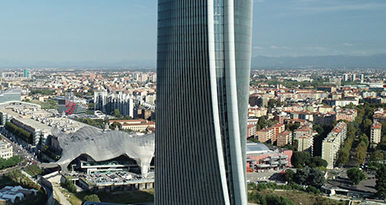
Net Zero Industry – Walking the Tightrope of Competitiveness and Climate Action
Global industry is entering a new chapter: the age of clean energy manufacturing. In order to reach net zero, all manufacturing will need to transition to carbon-neutral processes. This is a gargantuan transformation, the likes of which the world has not seen since the industrial revolution in the 19th century.
It is not exactly making things easier that the surrounding environment is one of increasing ideological rivalry and geopolitical tension, where economic ties have become points of leverage between mutually dependent trading partners. Russia’s invasion of Ukraine and its deliberate energy blackmail of the European Union is an obvious case in point.
In essence, the transformation to a net-zero economy is about replacing fossil fuels with clean electricity. A crucial implication is that we will move from a fuel-intensive to a raw material-intensive economy.
Yet, the EU finds itself at a competitive disadvantage today in several critical areas of clean tech manufacturing needed for this shift, with China as the indisputable leader in raw materials mining and processing as well as in manufacturing critical components for wind, solar, electrolysers, batteries and semiconductors, amongst other things. In Europe, more than 90% of wafers and other solar PV components are imported from China, together with a quarter of electric cars and raw material-intensive batteries.
With the US adopting the Inflation Reduction Act, Europe must seek to increase the resilience and competitiveness of its clean manufacturing industry to become more attractive as an investment destination.
The Net Zero Industry Act, which was published recently by the European Commission, seeks to answer that need. It aims to have at least 40% of certain key technologies manufactured in the EU by 2030. It identifies eight strategic technologies with a high potential to deliver on this benchmark including solar PV and solar thermal, onshore wind and offshore renewables, grid technologies, heat pumps and geothermal energy, batteries and storage, carbon capture and storage, and sustainable biogas and biomethane.
The measures devised to achieve this goal include: the reduction of administrative burdens and simplification of permit-granting processes; an objective for CO2 capture; rules for market access, which require public authorities to consider sustainability and resilience criteria in public procurement or auctions; Net-Zero Industry Academies to enhance skills and ensure quality jobs in these essential sectors; and regulatory sandboxes to test innovative net-zero technologies and stimulate innovation.
The European electricity industry is still in the early stages of assessing the details of this new legislative proposal, but some initial observations can be made:
Europe needs to act: The rapidly evolving geopolitical situation requires the EU to take action. Russia’s attempt at energy blackmail against the EU has exposed a serious vulnerability and has left us with no choice but to rely more on homegrown energy to decarbonise and reduce our dependence on foreign energy sources.
A new liability could quickly develop in relation to the near-monopoly position of China in production of solar panels, especially when considering the public discussions in China to ban export of wafers.
Electricity at the core: The proposal rightly positions electricity at the centre of the net-zero industrial strategy. Almost regardless of what type of manufacturing we talk about in a net-zero system, electricity will play a role in supplying energy, whether directly or indirectly. Eurelectric research shows that, with the right investments and deployment pace, electricity generation can be fully decarbonised well before 2045. But of course, this rests on the assumption of having ready access to the necessary hardware for generation as well as transport. As such, electric technologies should therefore be placed at the core of the Net Zero Industry Act.
Robust measures required: For a target of at least 40% domestic production by 2030 to be realistic, it must be backed by more robust measures. There are some positive elements among the proposed measures.
The focus on lowering administrative burdens and easing permitting is welcome and necessary. Permits for industrial sites can easily take multiple years.
To make the prospect of any substantial localisation of manufacturing realistic by 2030, the removal of red tape and eased permitting is absolutely essential.
To ensure steady demand, the Commission wants to require authorities to assess qualitative dimensions of offers given in public tenders, allowing them to choose ones that contribute to sustainability and resilience, even if they are more costly. While this may be needed, it also risks becoming a double-edged sword. Most importantly, it is crucial that the tendering procedures do not become too complex while keeping in mind the downstream impact on the cost of electricity generation.
More robust and concrete measures are needed in other areas as well, for instance in relation to skills and the so-called regulatory sandboxes. Also, the strategy will need to be backed by more concrete financial or fiscal measures – for instance, by establishing a stronger link to the EU multi-annual financial framework as well as the EU innovation policies. In short, there is plenty for the Council and Parliament to work on with this proposal.




